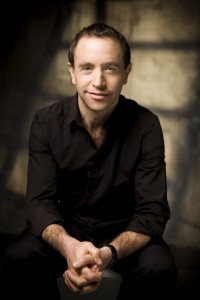UTAH SYMPHONY, Abravanel Hall, Feb. 28; second performance 8 p.m. March 1, tickets at 801-355-2787, 888-451-2787 or www.utahsymphony.org
Audiences usually think of performers as the element that can either make or break a concert, and while that is primarily true, there’s a secret, hidden factor that practically nobody realizes also matters: programming.
Friday night’s Utah Symphony concert, conducted by Mark Wigglesworth and featuring Grieg’s A minor Piano Concerto, is a perfect illustration of why programming matters: choosing what pieces go together can either set off the pieces chosen, or do the opposite — make an otherwise interesting piece seem boring by comparison.
Both happened Friday night.
The evening started with a sparkling new piece: A Freak in Burbank, by Albert Schnelzer. The piece was inspired by both film maker Tim Burton (from Burbank, hence the title) and Joseph Haydn. A disparate pairing, to be sure, but Schnelzer wove together colorful and dark “horror-movie” type music with classical elements in a way that was engaging and fun.
While it was certainly a nod to Danny Elfman’s many scores for Burton’s movies, it avoided copying his sound while retaining the cheerfully dark tone. Kudos to the symphony for putting a new piece on the program and keeping classical music a living language.
Pairing this piece with Grieg’s piano concerto, which followed, was a successful programming move because of the high energy in stylistically contrasting pieces — A Freak in Burbank played the role of a great warm-up band for a rock concert.
And the “rock star” of the central piece — Alexander Melnikov on piano, played the part well. The performance itself was clean, with effortless technique on the many virtuosic passages.
In some ways, a piece that is this well known and loved is difficult on the performer: how does one keep it fresh and bring one’s own personality to it when most of the audience is singing along in their heads — to music shaped by so many prior performances and recordings?
Melnikov chose a traditional interpretation, but brought his own stamp by way of tender, lush musicality in the softer passages, and a full-bodied, passionate drama to the more romantic ones. He also brought in an element of theatricality with the way he “conducted” the music with his left hand when it wasn’t busy — sometimes even when the right hand was still playing.
Following such a showy piece with Sibelius’ Symphony No. 2 in D major is where the programming mistake was made. The symphony is about 45 minutes long, with approximately the first 35 of those filled with mostly subdued, thoughtful music. The structure of the piece is to start slowly and build to a very big, very loud climax, and while the ending is certainly a “tour de force,” it takes a while to get there.
On the heels of two showy pieces, the Sibelius symphony sounded tedious and lackluster. And really, the problem didn’t seem much to do with the performance — after all, a conductor has to be faithful to the score. The problem was putting such a slow-building piece right there on the program. At least one audience member was spotted dozing away.
In a different context, the Sibelius symphony would have been an interesting journey, but not Friday. Overall, however, it was a good concert.

